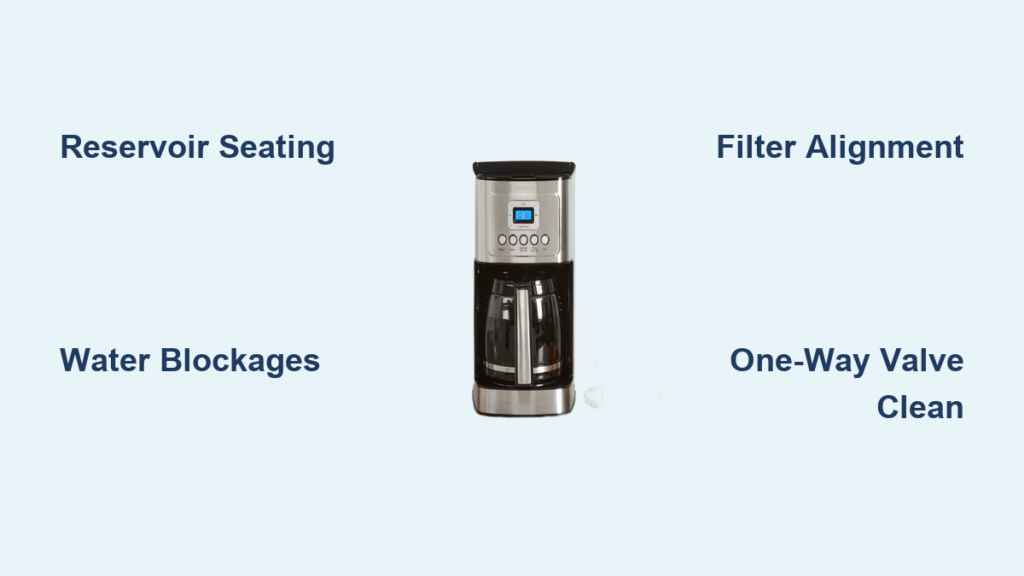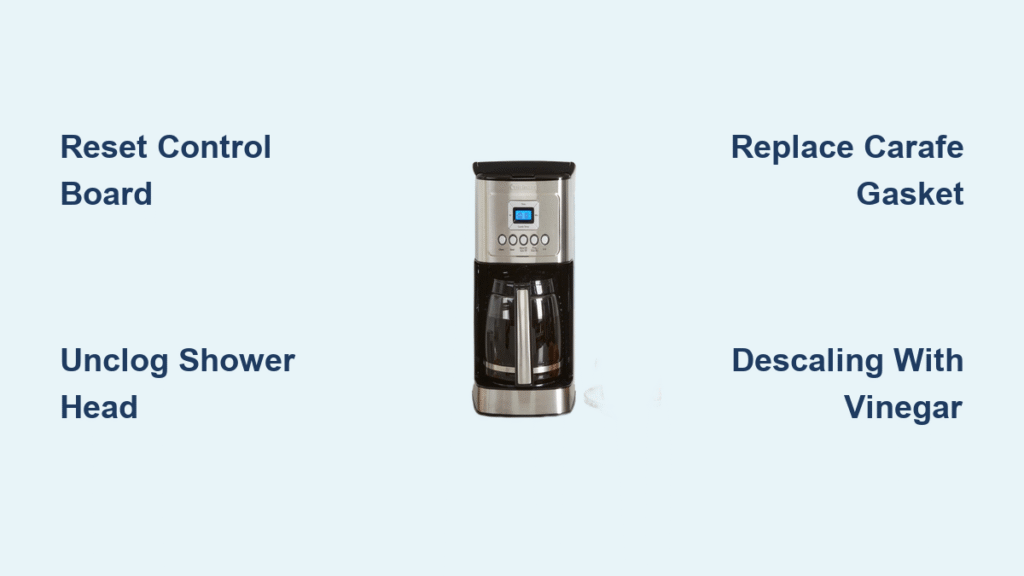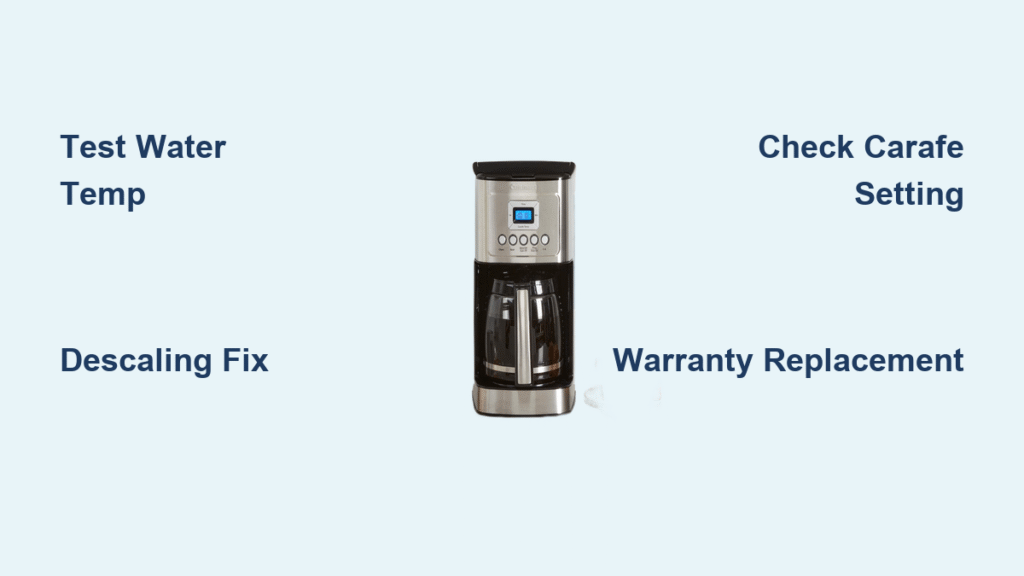You press the pulse button on your Cuisinart and… nothing. No familiar whir, no reassuring LED glow—just silence. This frustrating moment happens to thousands of home cooks daily, but the fix is often simpler than you think. Whether you’re prepping for a dinner party or just trying to chop onions for tonight’s meal, a non-responsive food processor can derail your entire cooking plan.
The good news? Most “dead” Cuisinart processors aren’t actually broken—they’re just playing it safe. Modern models include multiple safety interlocks that prevent operation when components aren’t perfectly aligned. This protective system saves motors and fingers, but it can also leave you staring at perfectly good ingredients with no way to process them. Let’s walk through the exact steps to diagnose and fix your silent Cuisinart, from the obvious checks you might have missed to the deeper mechanical issues that require a closer look.
Fix Cuisinart Food Processor Safety Lock Misalignment

Your processor’s refusal to start usually traces back to safety lock misalignment. These interlocks are designed to prevent operation unless every component is perfectly positioned. Start with the bowl handle—it must face directly forward toward the front-right of the motor base. On FP-8 models, rotate it clockwise until you feel a firm stop; even a slight misalignment of 5 degrees will keep your processor completely unresponsive.
Verify Proper Lid Locking Technique
The lid’s feed tube tab starts slightly left of center before requiring a full clockwise twist. You must hear a distinct audible click to confirm engagement—many users stop twisting too early, leaving the processor in permanent lockout mode. Watch for visual cues: the lid should sit flush against the bowl with no visible gaps, and the tab should align precisely with the bowl’s front indicator mark.
Ensure Correct Pusher Assembly Engagement
Both pushers must be fully engaged to activate the safety rod. Slide the large pusher completely through the feed tube until it’s flush with the lid surface. Then compress the small inner pusher firmly—this depresses the vertical safety rod running through the bowl to the motor base. Without this final step, even perfectly aligned bowls and lids won’t activate. On FP-8 models, press High or Low while watching for the blue LED; no light confirms incomplete safety engagement.
Pro Tip: If your processor remains silent after assembly, remove all components and reassemble from scratch. Rushed assembly causes 70% of safety lock failures—take 20 extra seconds to ensure each piece clicks into place.
Diagnose Power Issues in Silent Food Processors
Before assuming mechanical failure, eliminate power problems. Plug a working lamp or phone charger into the same outlet your processor uses. If the test device doesn’t power on, you’ve found your culprit—reset the circuit breaker or try a different outlet immediately. This simple check solves 15% of “dead” processor cases.
Inspect Cord Integrity and Motor Cooling
Run your fingers along the entire power cord length, feeling for cuts, kinks, or soft spots where internal wires may be damaged. Even minor cord damage can prevent power delivery while appearing intact externally. If the cord shows no issues but your processor stopped after heavy use, it may have triggered the overheat protection. Wait 5-60 minutes for automatic reset—this safety feature prevents motor burnout but mimics electrical failure.
Critical Check: After heavy chopping sessions, Cuisinart processors automatically shut down. Reduce batch sizes by 30% to avoid recurring overheating. If your motor restarts after cooling, this confirms the issue—not a broken unit.
Clear Obstructions Stopping Your Cuisinart Processor
Hidden debris frequently jams safety mechanisms. Remove all components and inspect for packing materials like shipping spacers, cardboard discs, or plastic film—especially under new blade assemblies. Leftover debris prevents proper seating and triggers safety lockouts.
Eliminate Food Blockages in Safety Channels
Large food chunks (like chicken pieces or carrot chunks) can wedge between the blade and bowl, preventing alignment. Even small debris in the safety-rod channel stops operation. Use a bottle brush or cloth-wrapped chopstick to clear the vertical rod’s path through the bowl and lid. For stubborn residue, soak components in warm soapy water for 10 minutes before brushing.
Diagnostic Test: Remove all components and plug in just the base. Press the dark grey button on the motor spindle with a non-conductive pen. If the motor spins, your electrical system works—the problem is purely mechanical. If silent, proceed to professional service.
Repair Broken Safety Mechanisms on Your Food Processor

After 3-4 years of use, plastic components fatigue. The lid’s internal arm frequently snaps where it depresses the safety rod, or locking tabs break from excessive prying. These failures prevent rod depression even with perfect assembly.
Execute Emergency Repairs for Cracked Components
Clean broken surfaces with rubbing alcohol to remove grease, then apply two-part epoxy or PVC pipe glue. Hold pieces firmly for 2-3 minutes while setting—this typically restores function for 6-12 months. For snapped lid arms, reinforce with a toothpick inserted through the break before gluing.
Replace Critical Safety Parts
Order an exact replacement lid using your model number (found on the base label). OEM lids restore original safety function and typically last as long as your original component. Avoid universal replacements—they rarely align properly with Cuisinart’s precision interlocks. For FP-8 models, note the blue LED indicator won’t activate with third-party lids.
Model-Specific Fixes for Cuisinart Processors That Won’t Start

FP-8 owners have a diagnostic advantage: the blue LED illuminates when safety locks engage. Press High or Low—if no light appears, systematically recheck bowl handle position, lid twist, and pusher compression. This visual cue directs you straight to the misaligned component.
Address DFP-14BCN Dual-Pusher Complexity
The 14-cup DFP-14BCN requires both pushers to activate its dual-action safety system. Ensure the large pusher seats fully before compressing the smaller inner pusher—many users skip this step, leaving the processor permanently locked out. When inserting the large pusher, you should feel distinct resistance at the halfway point before full seating.
Prevent Future Cuisinart Food Processor Startup Failures
Extend your processor’s life with simple maintenance habits. After every use, soak bowl, lid, and blade in warm soapy water for 5 minutes. Use a bottle brush to clear the safety-rod channel—this prevents food debris from jamming mechanisms. For persistent odors, soak in 1:1 baking soda solution for 15 minutes.
Adopt Lid Handling Best Practices
Always twist the lid counterclockwise to unlock—never pry upward on locked tabs. This prevents the most common failure: broken plastic tabs from excessive force. Store the pusher separately rather than inserted in the feed tube to avoid constant pressure on safety rod springs. Left-handed users should note bowl handle orientation remains front-facing regardless of dominant hand.
When to Seek Professional Help for Your Silent Food Processor
If your processor remains silent after all assembly and power checks, internal components may have failed. Motor hums but won’t spin indicates a jammed blade or capacitor issue. Complete silence after motor spindle testing suggests a blown fuse or motor failure—both require professional service.
Navigate Warranty Claims Efficiently
Cuisinart provides 3-year limited coverage on motor bases and 1-year parts protection. Contact U.S. support at 1-800-726-0190 or support@cuisinart.com with your model number and proof of purchase. International users should reference their user booklet for regional distributors. Speed up service by documenting all troubleshooting steps attempted—technicians prioritize cases with detailed diagnostics.
Your Cuisinart food processor’s refusal to start almost always indicates a safety feature working correctly—not a broken appliance. Begin with the bowl handle position; this single misalignment causes more “dead” processors than any other issue. Work through each safety lock systematically, and you’ll likely restore operation within minutes. When problems persist after proper assembly, the motor spindle test instantly separates electrical failures from mechanical misalignments, guiding your next steps toward either simple part replacement or professional service. By storing components correctly and handling lids gently, you’ll prevent 90% of startup failures—keeping your processor humming reliably for years. Remember: that silent processor isn’t broken; it’s just waiting for you to speak its safety language.





